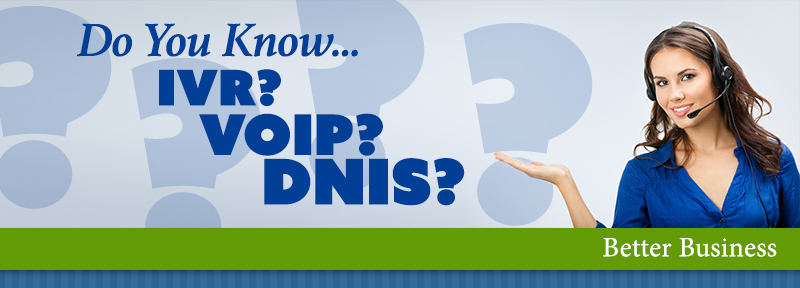 Every industry has its own jargon and answering services are no different. If you are considering an answering service for your business, you will be asked a series of questions to help define your needs and develop a plan. In order to make the selection and sales process smoother, there are a number of answering service terms that you should know.
Every industry has its own jargon and answering services are no different. If you are considering an answering service for your business, you will be asked a series of questions to help define your needs and develop a plan. In order to make the selection and sales process smoother, there are a number of answering service terms that you should know.
Here’s a short list to get you started.
Abandonment Rate
Abandonment refers to an inbound call where the caller hung up before a telephone service representative or call handler responded to the call. Knowing an answering service’s abandonment rate is helpful to understanding the quality of service your callers can expect.
Auto Attendant
“Dial 1 for customer service. Dial 2 for directions.”
This is an auto attendant. This “menu tree” allows inbound callers to route themselves to the correct person through a computerized system.
Blended/Universal Agent
A blended or universal agent has been trained to handle both inbound and outbound calls. They may also work on multiple projects depending on the needs of the answering service.
Call Handler
Also known as an agent, telephone service representative, TSR, operator, telephone operator, telephone secretary, customer service representative, CSR, secretary or what terminology feels comfortable to the client.
Call Patching
Call patching is the procedure where the answering services agent transfers the call to another line. A “warm” transfer is where the agent stays on the line, introduces the caller and then continues to patch the call through to the receiving party.
DNIS
Dialed Number Identification Services allows the telephone agent to know who the caller is before answering the call.
Follow Me
Find Me/Follow Me uses call forwarding technology to route calls to a client at any given time on any given phone.
IVR
Interactive Voice Response responds to the caller’s needs via voice or keyed in responses.
Live Answer
Live answer means that a human answers every call and the caller doesn’t go through an auto attendant.
Message Relay
Message relay allows a client access to messages via all manner of technology including text, voice mail, pager or email.
Overflow
Overflow is an option where calls flow to the answering service if they are unable to be answered by the client. This feature works for those times where call volume is at its highest but every call needs to be answered.
Predictive Dialer
A predictive dialer is technology that allows a prediction of when a call will be answered. The dialer automatically calls a list of telephone numbers so that the calls are sent to available agents who are not currently on a call.
Unified Reporting
A client should receive reports of call statistics and details to understand how the answering service is benefitting your business. Unified reporting allows these reports to be generated and available through a user interface.
VOIP
Voice over IP allows calls to be made using IP or internet protocol. These calls are made over the internet rather than over the telephone line.
Web Chat
On some websites, there is the ability to “chat” with an agent. This two-way chat session allows answering service agents to be available to your customer’s needs instantly, avoiding a phone call in most cases.
A sales representative from an answering service will understand that these terms aren’t readily known to everyone outside the answering service industry. Doing your homework, however, means that you will have a greater comprehension of your needs and expectations from any service that you hire.
.png?width=135&height=146&name=ABA_Logo_-_June_Picture_Blue_Trademark%20(1).png)


